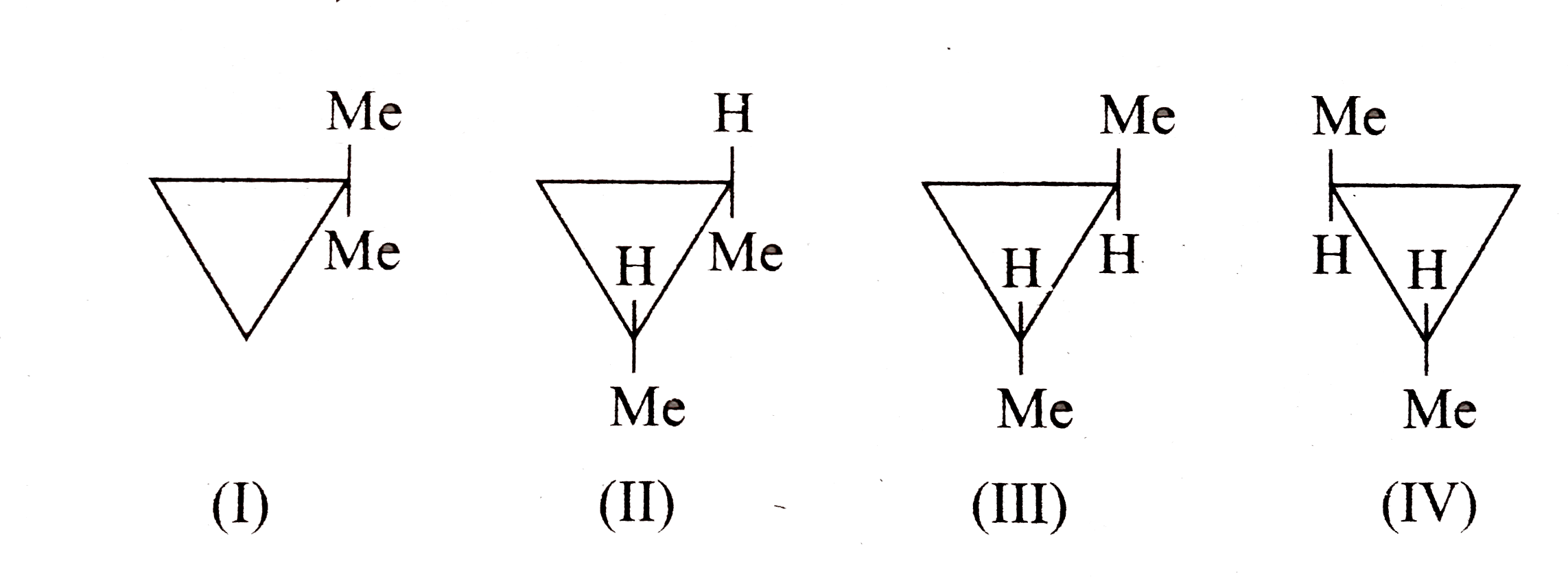Which of the following equimolar solution have highest vapour pressure?
Glucose
NaCl
K2SO4
K4Fe(CN)6
The correct Answer is:A
To determine which equimolar solution has the highest vapor pressure among glucose, NaCl, K2SO4, and K4(Fe(CN)6), we will analyze the dissociation of each solute and its effect on vapor pressure.
1. Understanding Vapor Pressure:
Vapor pressure of a solution is inversely proportional to the number of particles (ions or molecules) into which the solute dissociates in solution. This relationship is described by the Van't Hoff factor (i), which indicates the number of particles produced from a solute when it dissolves.
2. Identify the Van't Hoff Factor (i):
- Glucose (C6H12O6):
- Glucose does not dissociate in solution. Therefore, the Van't Hoff factor i=1.
- Sodium Chloride (NaCl):
- NaCl dissociates into two ions: Na⁺ and Cl⁻. Therefore, the Van't Hoff factor i=2.
- Potassium Sulfate (K2SO4):
- K2SO4 dissociates into three ions: 2 K⁺ and SO4²⁻. Therefore, the Van't Hoff factor i=3.
- Potassium Ferrocyanide (K4(Fe(CN)6)):
- K4(Fe(CN)6) dissociates into five ions: 4 K⁺ and Fe(CN)6⁴⁻. Therefore, the Van't Hoff factor i=5.
3. Comparing the Van't Hoff Factors:
- Glucose: i=1
- NaCl: i=2
- K2SO4: i=3
- K4(Fe(CN)6): i=5
4. Determining Vapor Pressure:
Since vapor pressure is inversely proportional to the Van't Hoff factor:
- Higher i means lower vapor pressure.
- Lower i means higher vapor pressure.
5. Conclusion:
Among the given solutions, glucose has the lowest Van't Hoff factor (i = 1), which means it will have the highest vapor pressure compared to the other solutions.
Final Answer:
The equimolar solution with the highest vapor pressure is Glucose (A).
Vapor pressure of a solution is inversely proportional to the number of particles (ions or molecules) into which the solute dissociates in solution. This relationship is described by the Van't Hoff factor (i), which indicates the number of particles produced from a solute when it dissolves.
- Glucose (C6H12O6):
- Glucose does not dissociate in solution. Therefore, the Van't Hoff factor i=1.
- Sodium Chloride (NaCl):
- NaCl dissociates into two ions: Na⁺ and Cl⁻. Therefore, the Van't Hoff factor i=2.
- Potassium Sulfate (K2SO4):
- K2SO4 dissociates into three ions: 2 K⁺ and SO4²⁻. Therefore, the Van't Hoff factor i=3.
- Potassium Ferrocyanide (K4(Fe(CN)6)):
- K4(Fe(CN)6) dissociates into five ions: 4 K⁺ and Fe(CN)6⁴⁻. Therefore, the Van't Hoff factor i=5.
- Glucose: i=1
- NaCl: i=2
- K2SO4: i=3
- K4(Fe(CN)6): i=5
Since vapor pressure is inversely proportional to the Van't Hoff factor:
- Higher i means lower vapor pressure.
- Lower i means higher vapor pressure.
Among the given solutions, glucose has the lowest Van't Hoff factor (i = 1), which means it will have the highest vapor pressure compared to the other solutions.
The equimolar solution with the highest vapor pressure is Glucose (A).
Similar Questions
Knowledge Check
Which of the aqueous equimolal solution will have its vapour pressure near to solvent ?
AUreaBBa(NO3)2CNaNO3DAl(NO3)3
Which one of the following solutions will have highest osmotic pressure? (Assume that all the salts are equally dissociated)?
View SolutionWhich of the following compounds would have the same vapour pressure ?

View SolutionWhich of the following solutions has highest bolling point?
View SolutionWhich of the following solution will have highest boiling point ?
View SolutionWhich of the following solutions will have highest boiling point:
View SolutionWhich one of the following solution has maximum vapour pressure at 27∘C temperature ?
View SolutionWhich of the following aqueous solutions should have the highest osmotic pressure?
View Solution
